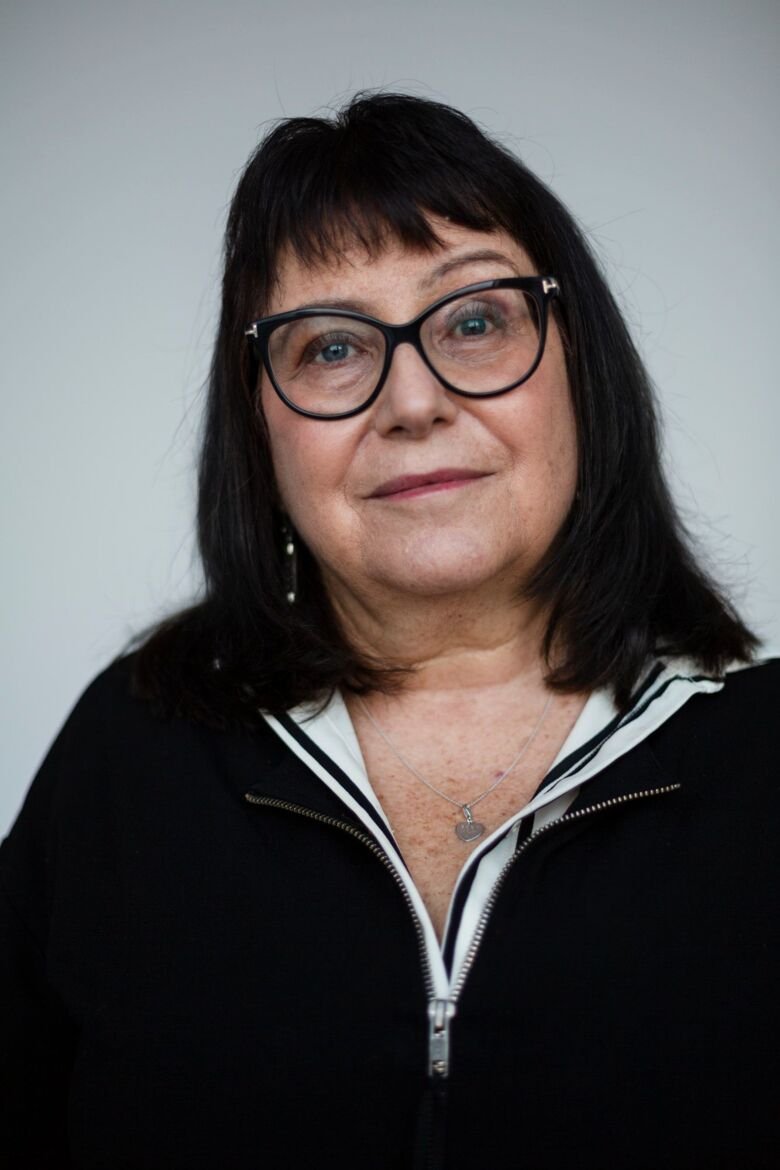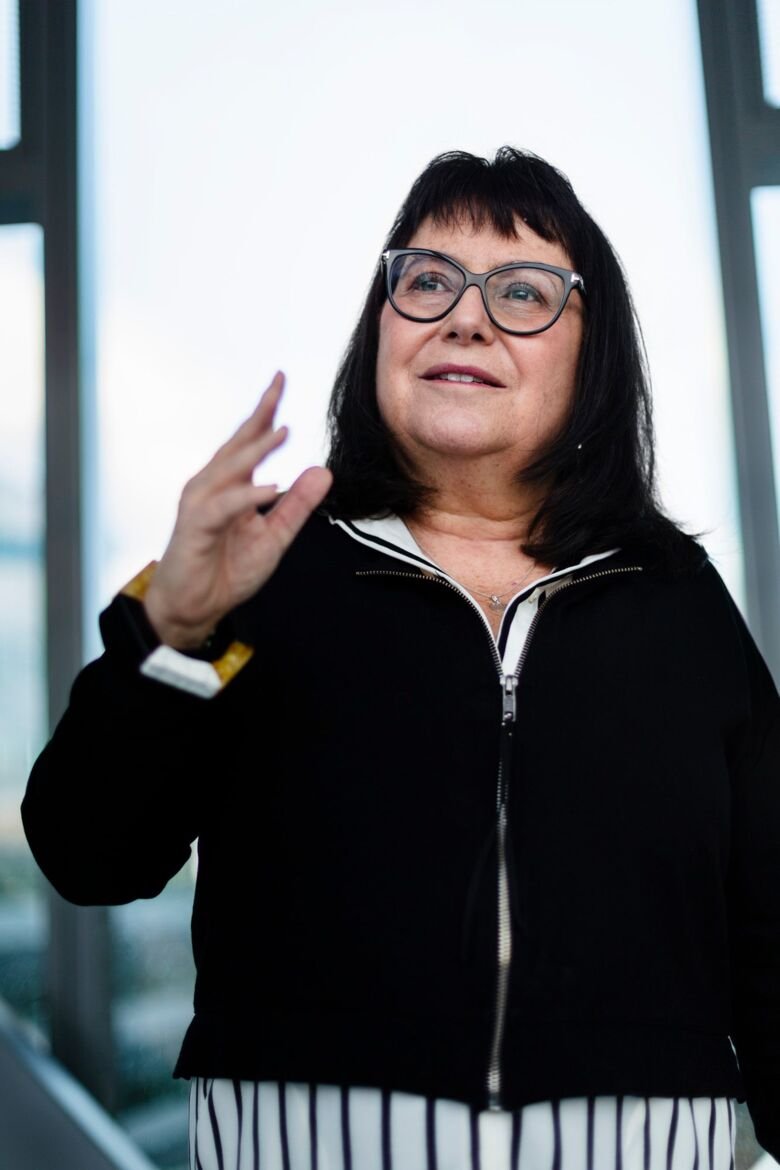Judith Bruchfeld wants to understand long-term COVID
As a tuberculosis researcher, she is accustomed to studying airborne pandemic contagion. Early in the current pandemic, Judith Bruchfeld saw the need to assemble various experts to investigate long-term illness after COVID-19. “There’s a lot we don’t understand yet.”

Text: Cecilia Odlind
First published in Swedish in the magazine Medicinsk Vetenskap, No 1/2021.
In March 2020, an increasing number of disturbing X-rays from patients suffering from COVID-19 began to appear. As an experienced tuberculosis researcher, Judith Bruchfeld became concerned.
“These were pictures of white lungs, which means that they are severely inflamed. It didn’t look good at all. “We realised that we had to monitor these patients,” said Judith Bruchfeld.
Together with a number of other healthcare specialists, she put together a multidisciplinary team at Karolinska University Hospital. It included not only pulmonary and intensive care physicians, but also neurologists, cardiologists, nephrologists, pain physicians and psychiatrists, as well as psychologists, occupational therapists, physiotherapists, speech therapists and nutritionists.
“I suppose it’s typical of me; having grown up in a big family, I always want to bring people together in large groups. I thrive in those contexts, which is why I create them,” she says.
A clinic was started and on 11 May the team received its first patient. The mission was to follow up patients who had severe COVID-19, for example those who required intensive care or had a complicated course of care. For COVID-19 patients, it is great advantage that all these specialists are assembled in one place, as they often have many different symptoms and multiple organ systems are affected.
“This enables assessments with a holistic perspective where we can apply everyone’s different skills,” says Judith Bruchfeld.
Since the clinic opened, more than 500 patients have received a two-month follow-up after their discharge from the hospital, and some have even been assessed after six months. The results are currently being compiled, but patients are generally multisymptomatic.
“They experience everything from severe fatigue, breathlessness and palpitations to anxiety and depression. Some people don’t regain their sense of smell and taste, and concentration and memory problems are common. The long-term prognosis is still uncertain,” she says.
Saw two different groups
Over the course of last summer it also became clear that there was another group of sufferers who were not hospitalised but who were burdened with long-term symptoms after having COVID-19. More and more referrals poured in from primary care, with requests for advice and help.
“These patients are younger; the majority are in the 25-45 age group, and more of them are women. They are often previously healthy, frequently fit. We decided to monitor them as well and have now met a hundred such patients,” says Judith Bruchfeld.
Data from this group also have yet to be fully analysed. But recently, Judith Bruchfeld and her colleagues published a compilation of three cases in the scientific journal Journal of the American College of Cardiology, which describes a problem that seems to affect many individuals in this group.
“It’s called postural orthostatic tachycardia syndrome, POTS, and means that you get a sharp increase in heart rate and some other symptoms such as dizziness, fainting, and nausea associated with changes in position, from lying to sitting or standing. This occurs without a drop in blood pressure. We’ve known about this phenomenon since the 1990s. Personally, I was unfamiliar with it, but there’s been a lot of new stuff with this virus. Sometimes I feel like I’m back at medical school,” she says.
This condition, which is caused by a dysregulation of the autonomic nervous system, has been dubbed post-COVID POTS. The researchers suspect that it may be explained by some form of autoimmune reaction involving the formation of antibodies against the body’s own tissues (which is more common among women), but their theory has yet to be confirmed. For POTS without prior COVID-19 infection, there is a self-healing rate of about 50 percent within a year, says Judith Bruchfeld.
“The treatment currently consists of symptom relief using heart rhythm-regulating drugs, among other things. A special rehabilitation programme in which patients train on their backs has recently been started by the COVID-19 clinic physiotherapists, and its efficacy be evaluated,” she says.

Important to get a diagnosis
The systematic mapping and study of long-term COVID-19 patients is important, says Judith Bruchfeld.
“For patients themselves, it means a lot to get a diagnosis. Many have had unexplained symptoms and disabilities for a long time, and this in turn can lead to an increased risk of depression and anxiety. And from a research perspective, this is a great opportunity to find out as much as possible about the disease and its long-lasting effects. Moving forward, we also need to plan the future resource needs of our healthcare system and other societal functions,” she says.
The proportion of people who have fallen ill with COVID-19 who suffer from long-term symptoms remains difficult to pinpoint; figures have ranged from 5-10 percent. Judith Bruchfeld herself has had COVID-19 but has made a full recovery.
“It was like a mild flu for me. But I lost my sense of smell for a while. To help get it back, I did smell training every morning and evening, as recommended by other researchers at Karolinska Institutet. Among other things, I smelled cinnamon, coffee beans and perfumed moisturizer — but I skipped the curry powder, which just made me sneeze,” she laughs.
Judith Bruchfeld’s research focuses on tuberculosis. And certainly there are some similarities with the novel coronavirus.
“COVID-19 has a more dramatic course, but both can cause long-term symptoms and can lead to stigmatisation for those who fall ill. And in both cases we’re dealing with a pandemic,” she notes.
Because tuberculosis kills more people than any other disease in the world — 1.5 million people annually.
“But it happens quietly and slowly. ‘Who cares?’”asks Judith Bruchfeld rhetorically.
In 2013, two new antibiotics for tuberculosis hit the market for the first time in 40 years. Among other things, Judith Bruchfeld has led research aimed at optimising the treatment of so-called multi-resistant tuberculosis, which consists of 4-5 different drugs or sometimes even more, in order to make it as effective as possible without too many side effects.
“But it hasn’t exactly been a high-priority diagnosis. But with resistant tuberculosis affecting the Western world more recently, interest has increased in the last 20 years,” says Judith Bruchfeld.
She has also served as an expert in the World Health Organisation’s work to develop treatment recommendations. By 2030, we are supposed to meet the WHO global tuberculosis target, which means that new infections should have decreased by 80 percent and deaths should have dropped by 90 percent.
“But we aren’t even close, and unfortunately tuberculosis is now on the rise again due to the COVID-19 pandemic, because patients haven’t been able to get diagnosed and treated in time. That increases the risk that drug resistances will develop, allowing the contagion to spread. It’s an important global issue to consider when weighing restrictions aimed at stopping the coronavirus pandemic against the fight against other major diseases,” she said.
Research on tuberculosis
Judith Bruchfeld’s work and research on tuberculosis was a natural consequence of her desire to devote herself to public health issues on a global scale. For her first professional trip abroad, she volunteered in a hospital in the Amazon jungle in Peru.
“It was the adventure of a lifetime. I was only 20 years old, and my experiences there of being able to improve the health of many people — through vaccinations, for example — made a big impression. That’s when I decided to become an infectious disease doctor,” she says.
Today she leads a clinical research group of 8 people. She greatly values the work of supervising other researchers.
“I don’t see myself as the most important person; I’m more of a tool for developing others. It’s very rewarding to see people tap into their own resources. It’s a bit like watching them paint their own painting,” says Judith Bruchfeld.
About Judith Bruchfeld
Name: Judith Bruchfeld
Title: Chief Physician at Karolinska University Hospital and a docent in Infectious Diseases at Karolinska Institutet’s Department of Medicine, Solna.
Age: 63
Family: A husband and two children.
Motto: “The future belongs to those who can predict it.”
How I relax: I sing in a choir and take solo singing lessons. Singing is a form of both mental and physical activity and releases hormones that make the body feel good. It gives me energy and confidence.
Best attributes as a researcher: I’m persistent and enthusiastic. And I like to collaborate with other disciplines and bring together observations from various directions into a holistic perspective that in itself can lead to new hypotheses.
Judith Bruchfeld on…
... three good things about having had COVID-19: 1. I finally got to hug my 93-year-old mom for the first time since last February. 2. I don’t have to be such a hypochondriac, checking myself for symptoms all the time. 3. I can go back to my singing teacher.
... commenting on the pandemic in the media: A headline in Dagens Eko read: “Judith Bruchfeld: ‘We don't really know anything’.” My children thought that quote was so funny that they immortalised it on a refrigerator magnet that I got for Christmas!
... the importance of asking questions: At home, we often quote Isidor Rabi, a Nobel laureate in physics, whose mother — instead of asking, “What have you learned today?” — asked “Have you asked any good questions today?” That's a good starting point for a researcher.
... refusing to be called “chairman”: “Chair” or “chairperson” is okay. I like to call myself the Gender General. And now I always speak up when the gender balance is unequal; it’s really aggravating when women aren’t included, despite being highly competent.
